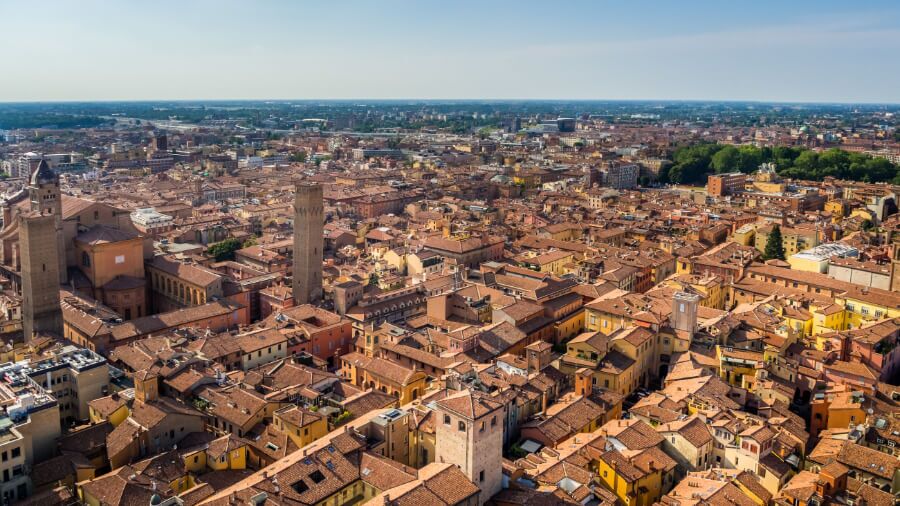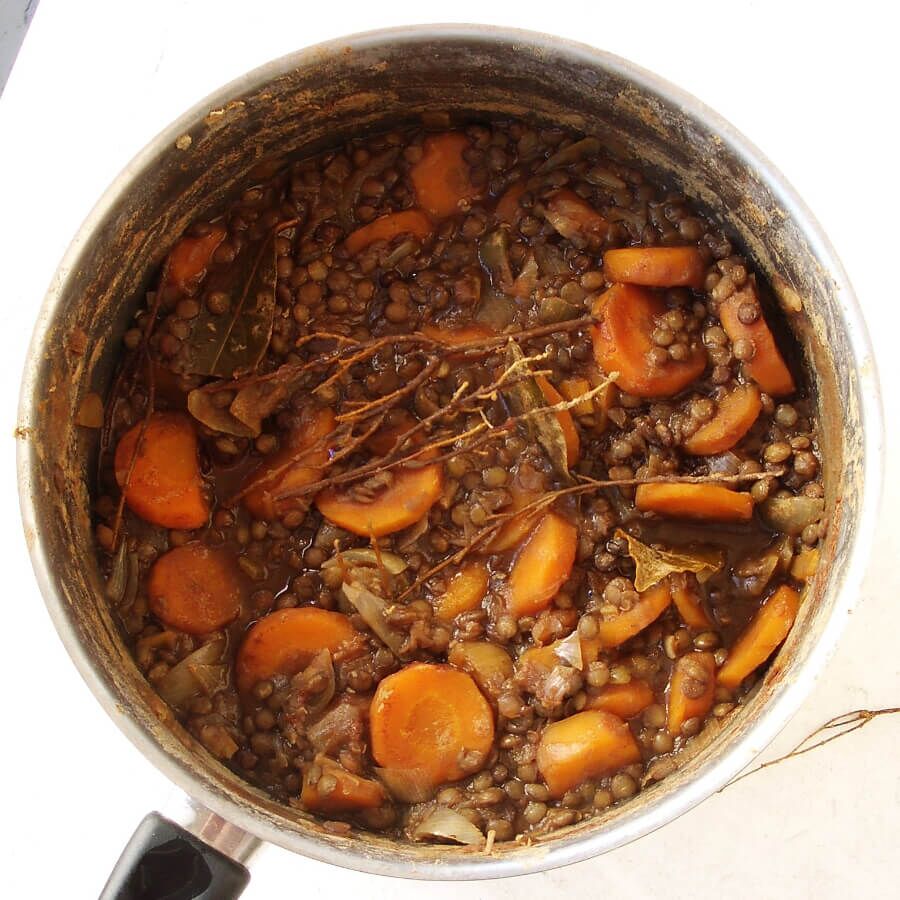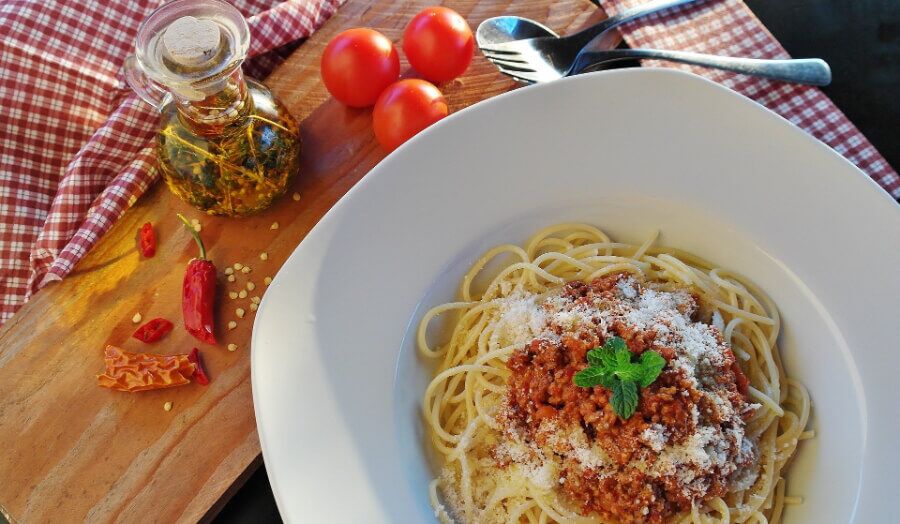A Brief History of: Spaghetti Bolognese
Understanding Spices
Your cart is empty.
SUBTOTAL
£0.00

Understanding Spices
You may well know all about spaghetti bolognese already. When German-based company Apetito ran a survey in 2014, they found that the dish was the third most popular eaten by German employees in their workplace cafeterias. Meanwhile, over in the UK spaghetti bolognese is currently the second most popular dish being served in British homes, up there with fish and chips, chicken kormas and roast dinners.
All over Europe and the world, we’re crazy about it. It’s an icon and staple of Italian cuisine – the country where it was originally conceived. Right?
Nope. Dead wrong. Much like those other staple dishes and foods that you have long associated with a certain country (croissants and France, sauerkraut and Germany, fajitas and Mexico), spaghetti bolognese isn’t actually Italian at all. At least, not in the way we have long assumed it is.
Many, if not all of us, innocently believed that spaghetti bolognese originated in the place that adorns its name – the city of Bologna. The city sits in the region of Emilia Romagna – a place where you can catch a plane, train or drive to just about anywhere else in Italy and as a result, it’s the country’s major food hub. Naturally, Bologna boasts some of the very finest Italian cuisine. Food to die for, they say.

Tourists flock here every single year, looking to have a taste of what they believe to be the national dish – the dish that Bologna is known for. Yet the concept of spaghetti bolognese most likely horrifies the locals. So, what’s happened? How did this massive misconception all come about?
Spaghetti bolognese really has no definitive tie to the city of Bologna. Generally, historians and hungry detectives alike all agree that actually, the dish (or at least, something that sounds and looks like the dish) originated in the city of Imola (a little west of Bologna). Imola is the birthplace of the earliest documented ragù sauce – dating all the way back to the 18th century.
Here, in 1891, cook Alberto Alvisi (cooking for the local cardinal Barnaba Chiaramonti, who would later go on to become Pope Pius VII) came up with a new recipe. This recipe was then published in a cookbook by Pellegrino Artusi. It was for a ragù known as ‘bolognese’ (its full name read as: Maccheroni alla bolognese). But Alvisi’s bolognese ragù does not look anything like today’s classic spaghetti bolognese. Its origins are actually much closer related to the French ‘ragoût’ – a stew where ingredients have been reduced to small pieces.

Similarly to ragoût, Alvisi’s sauce instructed cooks to use lean veal filet, pancetta, butter, onions and carrots. The meats and vegetables were finely minced (reduced to small pieces), then cooked with the butter until the meats were golden brown. Lastly, a broth was added. Not quite the spaghetti bolognese we know so well today, is it? There was no minced beef and no tomato sauce to be seen.
In the cookbook, Artusi mentions that one may want to add small, dried mushrooms, a few slices of truffle (very fancy) or chicken liver cooked in with the meat. He also suggested a half glass of cream being added to the sauce to make it extra smooth. But what about the spaghetti? Nowhere to be seen, apparently. Instead, the dish was to be served with a medium sized pasta – made fresh and cooked until firm before being flavoured by the sauce and parmigiano cheese.
While this dish does not sound like spaghetti bolognese, it was clearly a hit. It began a journey of slow transformation around the world. Known as ‘ragù alla bolognese’ in Italy today, the preferred choice of pasta has clearly changed. Nowadays, traditional Italian cooks use tagliatelle instead (still not quite spaghetti) and beef has replaced veal. Furthermore, tomato has been introduced as either a puree or a concentrated paste.
Because the sauce is quite complex to cook and involves a number or techniques, it’s only natural that there are many different variations, particularly throughout different regions of Italy. Throughout the country you’ll find differences in choices of meat (veal, pork, beef) and how much of it is used, as well as the use of different fats such as pork fat, butter, olive and vegetable oil, what type of tomato is used (is it fresh, canned, chopped or paste?). There are also a variety of cooking liquids being utilised which could be any of wine, milk, tomato juice, broth or all!

Despite all of these variations (every cook claiming that his is clearly the best, no doubt), there are some similarities and common ground to be found. For example, no garlic is used, In fact, seasoning is fairly limited to salt, pepper and perhaps a pinch of nutmeg. Meat will always dominate the dish as the primary ingredient while tomatoes are the side-kick.
So, while it may sound similar, spaghetti bolognese simply is not ‘ragù alla bolognese’. To propose that it is? That’s heresy to many Italians who perceive the dish to be inauthentic! Just ask the mayor of the city, Virginio Merola who sparked a debate on Twitter when he declared that the idea spaghetti bolognese originated in Bologna was ‘fake news’. “What we’d prefer the world to know is that Bologna invented tagliatelle, tortellini, and lasagne” he goes on to say, fighting the good fight for his fellow citizens, righting this terrible injustice.
Your average Bologna resident will rightly point out that typically, spaghetti bolognese is a dish of spaghetti served with a sauce made from tomatoes, minced beef, garlic, wine and herbs. There are subtle differences. Funnily enough, it is actually much more similar to ‘Neapolitan ragù’ in the south of Italy which has led some to question whether it originated in Naples instead.
However, like a genie out of the bottle, it’s all too late to cover up and correct now. Spaghetti bolognese is out there and has made a real name for itself, inadvertently putting the city of Bologna on the map, much to the bemusement of local residents.
It appears that now, finally, the people of Bologna are slowly willing to adopt the dish. Lepore Matteo (a Bologna council member involved in marketing the city) spoke on how they intend to use this false myth as a way to connect with ambassadors abroad. Of course, they can tap into the ingredients of spaghetti bolognese too, which do have real, tangible origins within Bologna.
Getting hungry just reading this? Why not check out these recipes from BBC Good Food or Seasoned Pioneers spaghetti bolognese version. It’s one of the best we’ve found and one of the most authentic…just don’t tell the Bolognese residents we said so!

Understanding Spices
Spices have long been integral to the UK's culinary landscape, adding depth, flavours, and richness to a myriad of dishes. From the pungent aroma of cumin in Indian curries to...
Read MoreUnderstanding Spices
Confetti is an essential part of any wedding day. Not only is it a wonderful way to greet a newlywed couple, but it also provides some beautiful photo opportunities. The...
Read MoreSeasonal Ideas
It’s no secret that any handmade gift will always be more special than a store-bought one. Homemade food gifts are especially wonderful, a labour of love that shows someone you...
Read MoreHealth and Wellbeing
It’s no secret that winter’s cold and gloomy weather makes us crave indulgent dishes like fondue and baked goods like sticky toffee pudding and apple crumble. While Christmas is the...
Read More